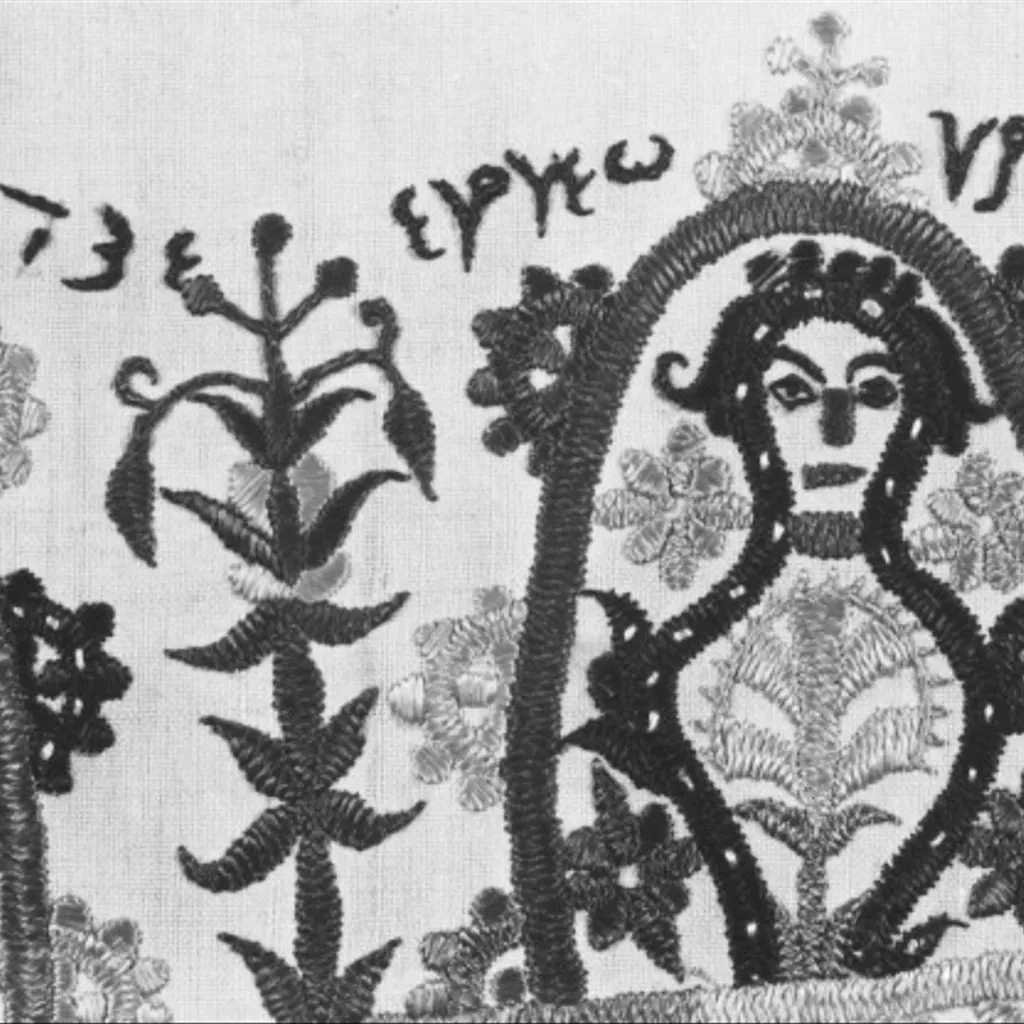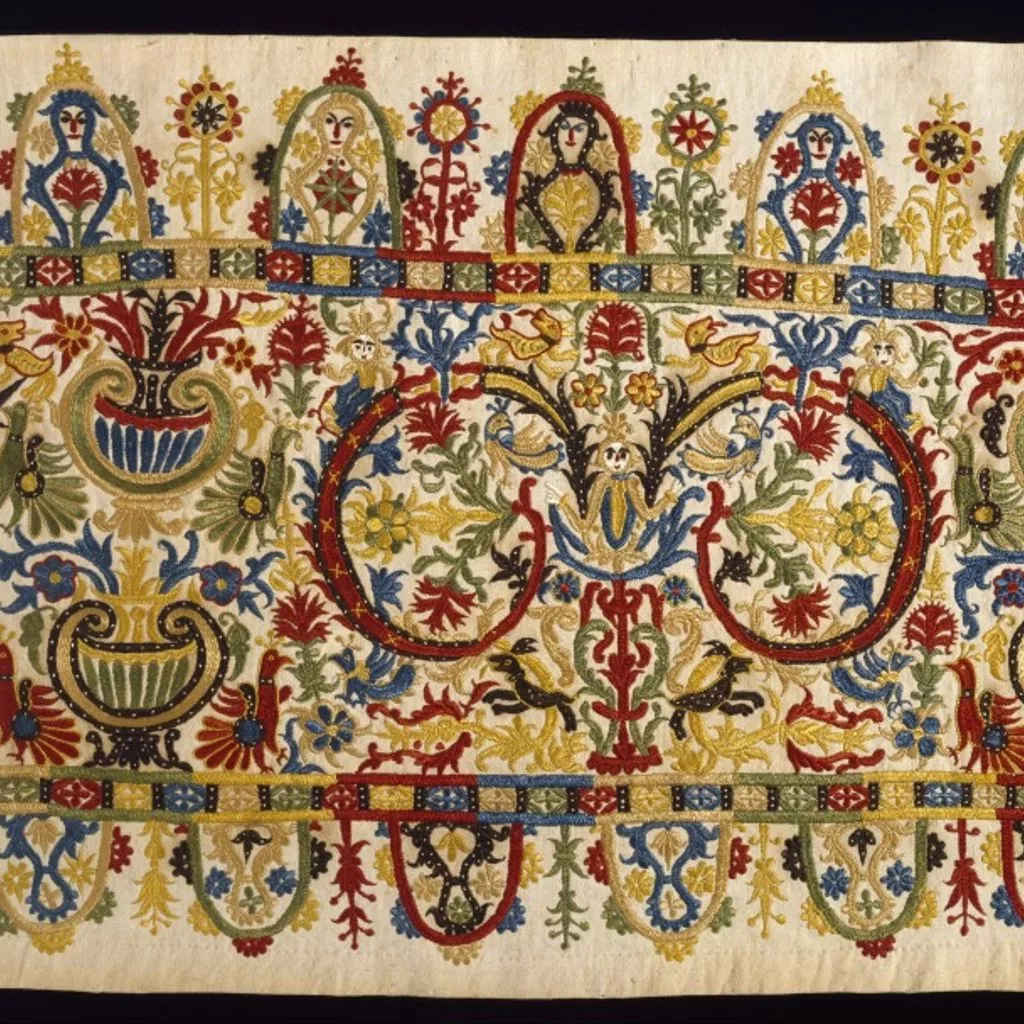Description
Skirt border, linen with silk thread, Georgia Grammatiko (possibly), Crete, 1733
Traditional Cretan embroidery is often very highly coloured and uses a variety of stitching techniques. Sometimes patterns were drawn freehand onto the fabric, but they were also worked out by counting the threads in the fabric.
Embroiderers embellished textiles used for church decorations, pillows, valances and hems of dresses using designs drawn from the rich mythology of Ancient Crete and the Minoan, Byzantine, and Italian cultures that have all influenced the history of the island. Typically they feature complex floral designs, mermaids, double-headed eagles, winged snakes, and other animals and birds.
This embroidered border was collected by Thomas Sandwith, British Consul-General in Crete from 1870 to 1885. It is signed in embroidered stitches by its maker, whose name was possibly Georgia Grammatiko, and dated 1733.
Linen embroidered with coloured silk. Designed with a frieze of alternating vases with sirens or mermaids, and a floral pattern with wide scrolling stems, interspersed with birds and animals. The border on each side is edged with arched patterns or 'vaults' representing churches, enclosing flowers and female figures. Around one church there is the description reading 'I Geo(rgia) Gram (mati...) ko (...) made it', and the date 1733. The stitches used are Cretan feather, herringbone, satin, stem and split stitches.










